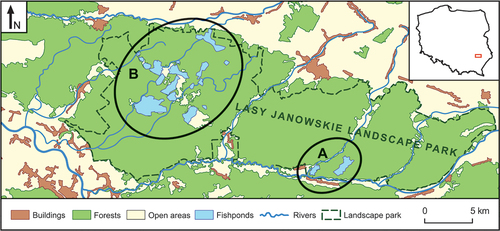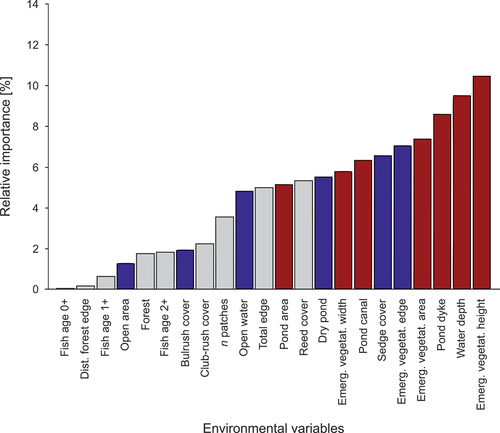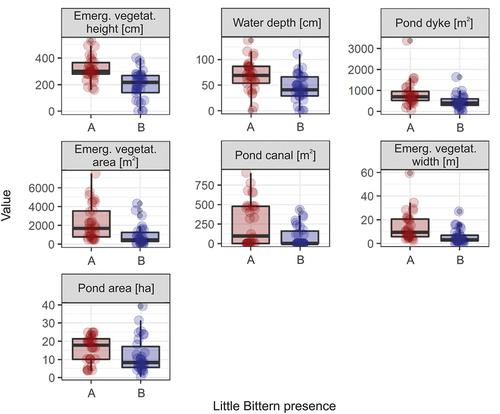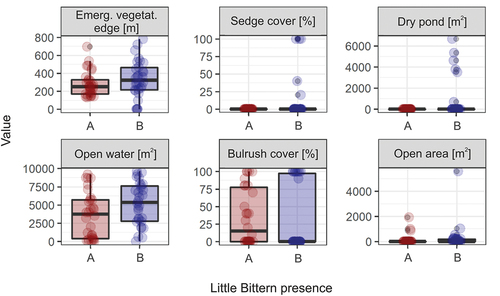Figures & data
Figure 1. Map of the study area in 2010–2012: A – two fishpond complexes with breeding Little Bitterns (Stawy Małe, Stawy Duże; total area 200 ha), B – six fishpond complexes without breeding Little Bitterns (Pieńki, Imielty Ług, Brzeziny, Maliniec, Osówek, Świdry; total area 1180 ha).

Table I. Environmental variables (habitat parameters) selected as potential predictors of Little Bittern presence in the study area. The variables were measured in the study plots. A – fishpond complexes with breeding Little Bitterns; B – fishpond complexes without breeding Little Bitterns. The variables are presented as the mean ± standard deviation (SD) and range.
Figure 2. Results of partial least squares (PLS) regression. Two latent variables (components) were identified that explained the presence (in red) of Little Bittern in the fishpond habitat. Environmental variables selected as statistically significant are emboldened.

Figure 3. The relative importance of environmental variables in PLS regression. Variables that were selected as statistically significant are shown in red (positive effect of the presence of Little Bittern) or in blue (negative effect of the presence of Little Bittern). Non-significant variables are in grey.

Figure 4. Comparison of values (points) of environmental variables that positively predicted the Little Bittern presence. A/red: fishpond complexes with breeding Little Bitterns; B/blue: fishpond complexes without breeding Little Bitterns. The boxes show the median (bold line), interquartile range (box), min-max values (whiskers) and outliers (points beyond the whiskers).

Figure 5. Comparison of values (points) of environmental variables that negatively predicted the Little Bittern presence. A/red: fishpond complexes with breeding Little Bitterns; B/blue: fishpond complexes without breeding Little Bitterns. The boxes show the median (bold line), interquartile range (box), min-max values (whiskers) and outliers (points beyond the whiskers).

Table II. Partial least squares (PLS) regression coefficients for each explanatory environmental variable. Variables selected as statistically significant are emboldened.
